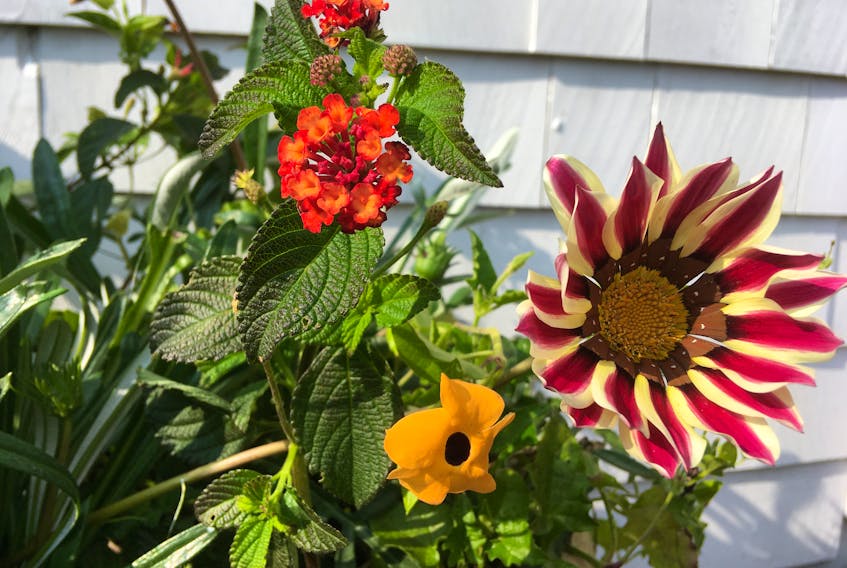We think of perennials as plants that come back every year and annuals as plants that we need to plant every year, but our understanding of these ideas is a bit clouded by the influence of our climate.
By this, I mean that there are many perennial plants from warmer climes that are not able to survive our winters, so we replant them every year.
Consider the geranium — a lovely perennial plant that will live for years, unless we leave it out for the winter.
Lantana is a gem of a flower that is sold for your garden bed, but I have had success keeping a few of them for several years and taking slips to propagate them as well. I’ve also had success on both accounts with brown-eyed Susan vine, geranium, fuchsia, mandevilla and rosemary.
We treat these as annuals, but we could consider them as houseplants that go out to our flower beds for the warm months.
A Google search told me that other flowers like red dipladenia, bougainvillea (wow!), passion flower, gazania (just the perennial varieties), morning glory and majesty palm are all good candidates for overwintering inside.
I’ll try a few more this year.
A friend shared an instructional video with me on how to overwinter pepper plants — now that’s interesting. Peppers are perennials, so they will grow for several years if protected from the cold and are not “genetically programmed” to start dying back as the days get shorter.
Other perennial vegetables die back in the fall but maintain life underground.
If you’ve grown potatoes, you’ve likely seen the odd straggler left in the garden pop up from the year before. I’ve learned that cucamelons and scarlet runner beans also produce marginally hardy tubers, so I am going to get busy and dig these up this fall. I will probably store some bare, like potatoes, and put a few whole plants in pots to stay active for the winter.
But why all this effort? I don’t have much (any) extra window space to maintain more plants. It only saves a small amount of money for all the effort. The more important benefit for me is the potential of having a matured, producing plant ready to produce as soon as the weather warms up. This will be an interesting experiment.
Care of overwintering plants has to take into account that the day length is shortened, the light is weaker and growth slows down, so it is recommended that the plant is cut back severely, and kept much drier, but they can’t be allowed to dry out completely. They won’t have insects to pollinate their flowers and some may not be very pretty.
The other drawback is that it is hard to avoid taking in some critters with the soil. Watch closely, especially in March as aphids and other friends start to emerge from the soil. This doesn’t have to be an issue — spraying soapy water covers it.
Over the years there have been many plants that I haven’t had success with overwintering. Mint and other perennial herbs need the winter cold and die-back. Annual herb plants don’t typically live past going to seed but starting them by seed inside works.
Happy gardening!
Caroline Cameron lives in Strathlorne, Inverness County and offers gardening and hiking guide services around Cape Breton Island. She welcomes your gardening comments and questions by email or on Facebook at Nature/Nurture Gardening & Hiking.









